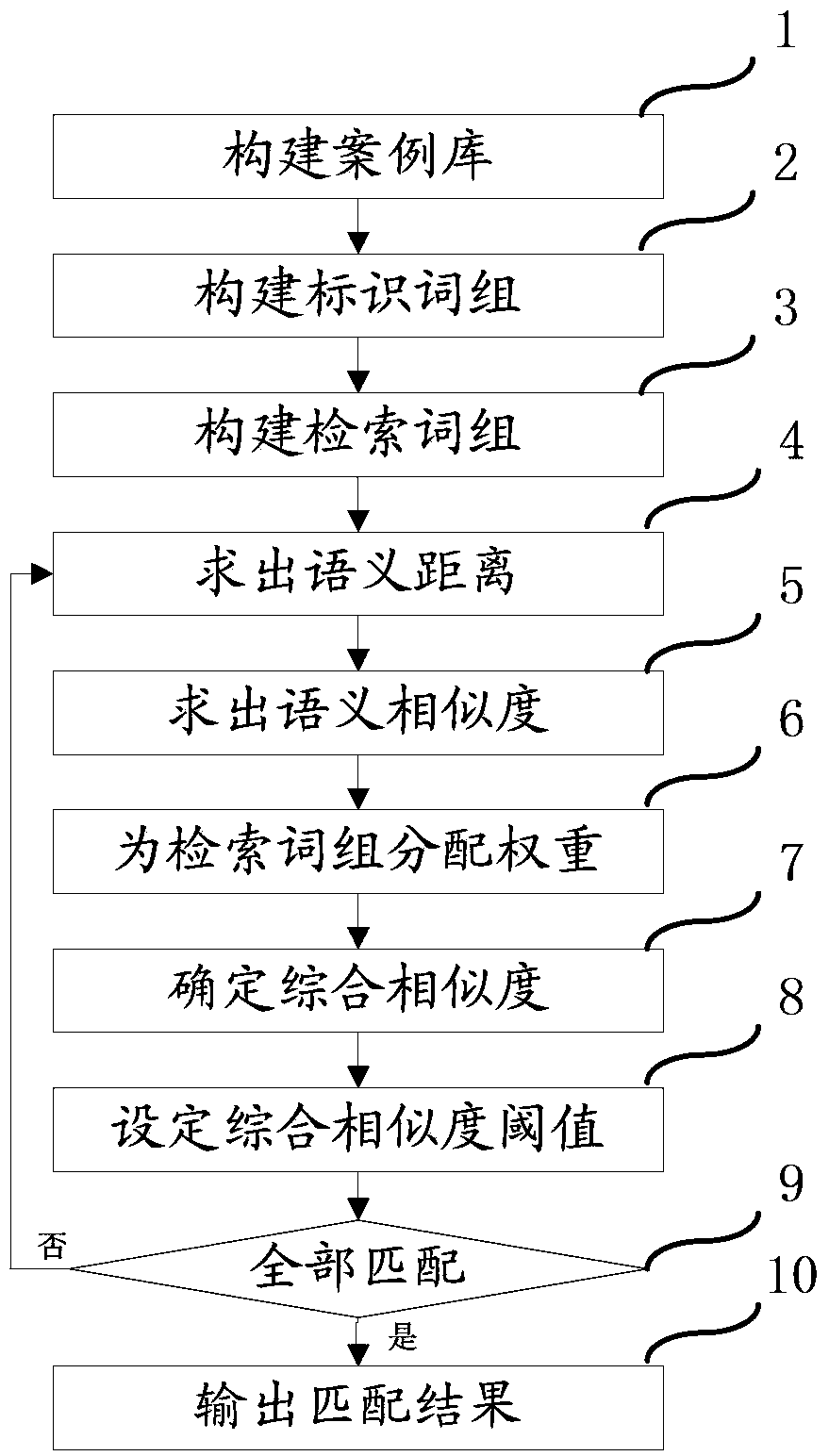Method for matching textual cases
A matching method and case technology, applied in special data processing applications, instruments, electrical and digital data processing, etc., to achieve good query results, avoid missed detection, and strengthen inference functions.
- Summary
- Abstract
- Description
- Claims
- Application Information
AI Technical Summary
Problems solved by technology
Method used
Image
Examples
Embodiment Construction
[0027] The present invention provides a text case matching method, such as Figure 1 to Figure 4 shown, including:
[0028] Step 1. Collect cases from news or archives, and assemble the cases to build a case library;
[0029] Step 2. Extract keywords from the cases in the case base, and construct multiple keyword trees by using the upper and lower relationships between the keywords. The keywords on each keyword tree are keywords of the same category, synonyms Only one word is displayed between them, and the rest are hidden behind the word;
[0030] At the same time, the keywords extracted from each case are constructed into multiple forms such as Q={q 1 ,q 2 ,...q n}, the keywords in each tagged phrase are of the same category, and n represents the number of tagged words;
[0031] The keyword tree is obtained by extracting keywords from all the cases in the case library. The case library corresponds to a lot of keyword trees. This step is very critical, and it is the most...
PUM
 Login to View More
Login to View More Abstract
Description
Claims
Application Information
 Login to View More
Login to View More - R&D
- Intellectual Property
- Life Sciences
- Materials
- Tech Scout
- Unparalleled Data Quality
- Higher Quality Content
- 60% Fewer Hallucinations
Browse by: Latest US Patents, China's latest patents, Technical Efficacy Thesaurus, Application Domain, Technology Topic, Popular Technical Reports.
© 2025 PatSnap. All rights reserved.Legal|Privacy policy|Modern Slavery Act Transparency Statement|Sitemap|About US| Contact US: help@patsnap.com



